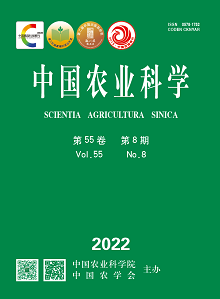【Background】The physiological metabolism of G. bicolor is active after harvest, and it is sensitive to low temperature. After harvest, it is often stored in a dark environment with slightly lower than room temperature. However, the long-term dark storage of G. bicolor will lead to sugar starvation, which affects the quality of G. bicolor. The dark storage also inhibits the photosynthetic process, resulting in reduced photosynthetic assimilation products and aggravated postharvest sugar starvation, and sucrose is the main form of photosynthetic product transport in plants. 【Objective】The effects of exogenous sucrose treatment on postharvest quality, sucrose metabolism and chloroplast of G. bicolor were studied to explore the related mechanism of sucrose treatment on delaying postharvest senescence in this study.【Method】On the basis of screening out the optimal concentration, the contents of starch, soluble sugar, reducing sugar, soluble protein and chlorophyll in G. bicolor during storage were detected to study the effect of sucrose treatment on postharvest quality of G. bicolor. The contents of sucrose, fructose, glucose, and sucrose metabolism related enzyme activities, such as Amylase, SPS, AI, SS-s, and SS-c, were detected during storage, and then the effects of sucrose treatments on sucrose metabolism of G. bicolor was studied. The changes of chloroplast ultrastructure during storage were observed by TEM. The activity of LOX, the content of MDA, and the Fv/Fm and QY of chloroplast during storage were detected, then the effects of sucrose treatment on the physiology and function of chloroplast were studied. The effects of postharvest sucrose treatment on G. bicolor were studied at biochemical and subcellular levels.【Result】The screening of sucrose concentration in the earlier study showed that 12% sucrose had the best preservation effect. Especially in the late storage period, compared with the control (distilled water treatment), the respiratory intensity, weightlessness rate, and decay rate of 12% sucrose treatment decreased by 39%, 7.8%, and 15.87%, respectively. Further study found that in the late storage, compared with the control, the treated sucrose content ratio was 1.82, starch content ratio was 1.10, soluble sugar content ratio was 1.11, soluble protein content ratio was 2.20, and chlorophyll content ratio was 1.23, indicating sucrose treatment significantly delayed the degradation of carbohydrates and nitrogenous substances. Sucrose treatment significantly inhibited the activities of SPS, AI and Amylase, indicating that sucrose treatment inhibited sucrose metabolism, thereby reducing the decomposition of sucrose and starch. In the later study on the physiological functions of chloroplasts of G. bicolor, it was found that at the end of storage, compared with the control, the treated G. bicolor effectively maintained the structural integrity of chloroplasts, reduced the activity of chloroplast LOX by 53.13%, and reduced the content of MDA by 33.33%. The Fv/Fm and QY were 1.35 and 1.97 times that of the control, respectively, indicating that sucrose treatment significantly delayed the senescence of chloroplasts. Further analysis showed that chloroplast function was positively correlated with starch and soluble sugar content, indicating that carbon source deficiency caused by sugar starvation could affect chloroplast function.【Conclusion】Sucrose treatment inhibited postharvest quality deterioration and chloroplast senescence of G. bicolor by reducing respiratory intensity, weightlessness rate and decay rate, regulating sucrose metabolism, reducing the degree of chloroplast membrane lipid oxidation, and maintaining the integrity of chloroplast structure, thereby delaying the senescence of G. bicolor.









